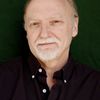Over the next two weeks here I will count down the days to the atomic bombing of Japan (August 6 and August 9, 1945), marking events from the same day in 1945. I've written hundreds of article and three books on the subject: Hiroshima in America (with Robert Jay Lifton), Atomic Cover-Up (on the decades-long suppression of shocking film shot in the atomic cities by the U.S. military) and Hollywood Bomb (the wild story of how an MGM 1947 drama was censored by the military and Truman himself).
For openers, for July 26, 1945, and below that, for July 25.
July 26: Early this day, Chief of Staff Gen.George Marshall cabled to Gen. Leslie Groves, military chief of the Manhattan Project back in Washington, D.C., his approval of a directive sent by Groves the night before. It read: "1. The 509th Composite Group, Twentieth Air Force, will deliver its first special bomb as soon as weather will permit visual bombing after about 3 August 1945 on one of the targets: Hiroshima, Kokura, Niigata and Nagasaki.... 2. Additional bombs will be delivered on the above targets as soon as made ready by the project staff....."
This assembly-line approach would have tragic consequences for the city of Nagasaki. In a 1946 letter to Stimson, Truman reminded him that he had ordered the bombs used against cities engaged "exclusively" in war work. Truman would later write in his memoirs, "With this order the the wheels were set in motion for the first use of an atomic weapon against a military target." As noted yesterday, Hiroshima and Nagasaki were far from being merely "military" targets.
The other major event from this day was equally significant. The Potsdam Declaration was issued in Germany by the United States, Britain and China. (The Soviet Union was still ostensibly not at war with Japan but agreed to enter the conflict around August 7. This has led some to suggest that we used the bombs quickly to try to end the war before the Russians could claim much new territory.) The declaration ordered Japan to surrender immediately and unconditionally or face a reign of ruin -- "prompt and utter destruction" -- although the new weapon was not mentioned (such a warning had been considered by Truman but rejected).
Much was made of the importance of the "unconditional" aspect but three weeks later, after the use of the new bombs, we accepted a major condition, allowing the Japanese to keep their emperor, and still called the surrender "unconditonal." Some historians believe that if we had agreed to that condition earlier Japan might have started the surrender process before the use of the atomic bombs. Others believe an explicit warning to the Japanese, or a demonstration of the new weapon offshore in Japan, would have speeded up the surrender process. But the Potsdam Declaration set U.S. policy in stone.
July 25: Still at Potsdam, Germany, where he has gone to meet with Winston Churchill and Joseph Stalin, President Harry S. Truman wrote in his diary this day the following. Did he know that the vast majority of citizens then living in the target cities were women and children--or was he lying to himself and history?
"We have discovered the most terrible bomb in the history of the world. It may be the fire destruction prophesied in the Euphrates Valley Era, after Noah and his fabulous Ark. Anyway we 'think' we have found the way to cause a disintegration of the atom. An experiment in the New Mexico desert was startling -- to put it mildly. ...The explosion was visible for more than 200 miles and audible for 40 miles and more.
"This weapon is to be used against Japan between now and August 10th. I have told the Sec. of War, Mr. Stimson, to use it so that military objectives and soldiers and sailors are the target and not women and children. Even if the Japs are savages, ruthless, merciless and fanatic, we as the leader of the world for the common welfare cannot drop that terrible bomb on the old capital or the new.
"He and I are in accord. The target will be a purely military one and we will issue a warning statement asking the Japs to surrender and save lives. I'm sure they will not do that, but we will have given them the chance. It is certainly a good thing for the world that Hitler's crowd or Stalin's did not discover this atomic bomb. It seems to be the most terrible thing ever discovered, but it can be made the most useful."
Note: "Military" made up only about 10 percent of the casualties in Hiroshima, and 1 percent at most in Nagasaki (including American POWs.).
Greg Mitchell, former editor of Nuclear Times and Editor & Publisher, is the author of more than a dozen books, with three on the use of the bomb, including Atomic Cover-Up (on the decades-long suppression of shocking film shot in the atomic cities by the U.S. military) and Hollywood Bomb (the wild story of how an MGM 1947 drama was censored by the military and Truman himself).
